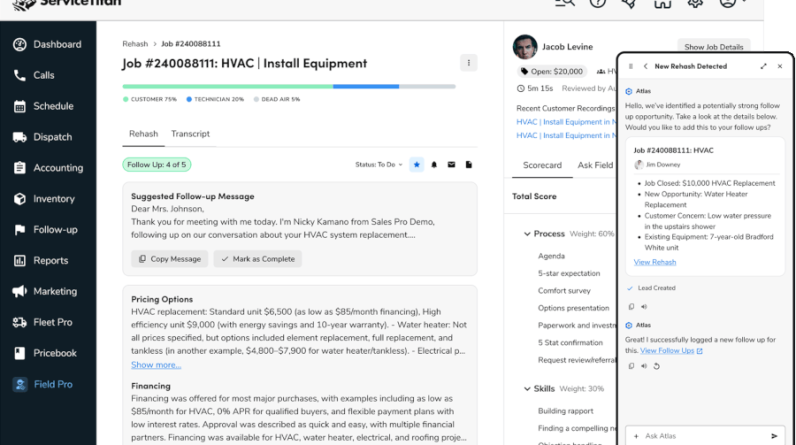(Daniel Dines, CEO of UiPath © UiPath)
Hot on the heels of the pivotal earnings report, UiPath set off on a world tour, meeting customers, partners, analysts and stakeholders in Germany, Singapore and Paris. During the closing remarks of his keynote at UiPath on Tour in London, CEO and Executive Chairman Daniel Dines made a clear statement of intent:
I am returning as the CEO of UiPath after a stint in product and engineering. It was very welcome to immerse myself into our product, and understand better how AI is going to influence our roadmap and what we can deliver for our customers.
Coming back as the CEO will help me bring back to UiPath the fanatical customer centricity – maybe some of you still remember the UiPath versions from 2016, 17 and 18 where we’ve done everything for the sake of the customer. I promise you – this is where we are going, and this is going to be the version of UiPath 2024 and upwards.
It felt like Dines was drawing a very firm line in the sand. Back in 2018, UiPath was already declaring its vision of “one robot for every worker”. Customers were building their own UiPath robots and automating processes that reduced the time taken from five hours down to a couple of minutes. But hasn’t UiPath always been customer-first? During a sit down with Dines, I asked him what had drawn his focus – and he was open in what had triggered these remarks:
I think we’ve over-rotated in the last few years on becoming more of a big organization with a lot of central processes and we’ve become more attached to the process rather than the customer. So I want to change the approach of UiPath back to fanatical customer care. This is how we built it.
Dines argued that UiPath’s story is usually one of grassroots adoption within an organization before working with the C-Suite to ensure they understand UiPath’s platform. This takes trust to develop over time by connecting to the products or services offered by a business, and finding automation opportunities, rather than expecting companies to go all-in with a large deal.
This re-affirmed the approach described to me during a conversation with UiPath customer Schneider Electric, which was looking for a tailored automation strategy that could be developed collaboratively. The ability of UiPath to listen to the customer in that particular use case was cited as a key stepping stone towards expanding strategically across different areas of the business – while reducing silos and embracing change. Dines emphasized that this focus is not just a business strategy, but rather a core element of UiPath’s identity.
Speaking of change, it would be remiss not to address the changes that UiPath itself has seen recently. How have UiPath customers reacted to seeing Dines return as CEO? He said:
Most of the customers have reacted positively, because it was not a dramatic change in the company. They liked the idea of the technical founder being in charge of the company – they feel that they can have a more direct input into our technical roadmap. We can become even more agile to respond to their needs.
The symbiosis between automation and AI
Close collaboration was a significant part of Dines’ keynote earlier in the day, making the case for robotics and agentic AI. He started by explaining that agentic is defined as the ability of an AI system to design and control the flow of a business, using an analogy of the relationship between left brain and right brain functions to explain the synergy between RPA (Robotic Process Automation) and AI.
The left hemisphere of the brain is structured, logical and used for systematic processing based on rules, analytical thinking and detail – just as RPA is designed to handle repetitive tasks with precision and logical sequencing to solve problems methodologically. Routine low-value tasks consume little cognitive power, such as going to get a drink from the fridge in the night.
The right side of the brain, associated with creativity, intuition and holistic thinking aligns with the capabilities of AI – recognizing patterns, learning and adapting over time, and making sense of ambiguous information. More spontaneous tasks require more cognitive power and creativity using what we already know, to make it more dynamic. So, to continue the analogy, think going to get a drink from the fridge in the night when you’re in an unfamiliar hotel room.
The two parts of the brain collaborate with each other to carry out functions, learn and adapt. In the same way, there are a lot of synergies between automation and AI. As UiPath looks to the future, one of its stated key goals is to help organizations embrace AI adoption through the use of automation.
This agentic approach not only speeds up the process but also ensures high-quality decision-making by combining AI-driven insights with automated actions. For enterprises, this means faster turnaround times, reduced error rates, and enhanced overall productivity. Dines explained:
Part of the problem [with organizations] is that AI and automation are usually in separate groups. The more these groups collaborate, the more we see AI and automation powering each other. I had a discussion with one of our customers earlier today and he told me, ‘The more we talk about AI, we actually end up talking about automation’.
Robot, heal thyself!
By integrating AI capabilities with automation platforms, businesses can achieve more sophisticated and intelligent workflows, capable of handling complex tasks that were previously beyond the reach of traditional automation tools.
Earlier in the day, Dines had given a demonstration of upcoming platform changes that demonstrated how Autopilot could work through problems as they happen. Using an example of a process for onboarding employees, the use of agentic AI was able to not just identify exceptions in the workflow but instead of failing, provided recommendations to fix it. The user can drill down into the details to ensure that the recommendation is the right one, but saves time for developers and offers visibility and confidence into improving the workflow.
Exception handling can be a time consuming process – even though coding applications have come a long way with open source add-ons to improve the user interface, it made me think of the number of times I’ve fixed one exception only for another part of the workflow to break further down the script.
Another example of the potential of agentic AI was using knowledge of the existing building blocks at its disposal to improve existing automations was mentioned during the same session. A healthcare customer was using a long, manual process to enlist organ donors into their systems. This required a long questionnaire that had to be checked against medical history and other documents to ensure that the donor was qualified. Human intervention is essential for the process – but UiPath was able to provide the ability to upload the documents into the backend, and use a Retrieval-Augmented Generation (RAG) approach to allow the agent to scan the documents to retrieve information faster. Returning to this example during our discussion, Dines elaborated:
This is a use case where we invest with this retrieval-augmented generation approach where we can upload the documents, process them, or build on them. We can answer searches using other loads much faster and then pair the answers with automations. So to me, it’s one of the best use cases that we know.
Research from IDC on Future Enterprise Resiliency in April found that the main factors limiting further evaluation or expanded use of generative AI in organizations include a lack of gen AI skills or expertise (29.8% of respondents), concerns about accuracy or potential toxicity (23%) and a lack of clear use cases or initial offerings that align with business needs (20%).
For organizations who may be hesitant about the adoption of AI from a risk management perspective, Dines is optimistic that this has the opportunity to demonstrate significant value for both users and executives watching the bottom line – because it keeps a human in the loop as well as guardrails around the process, and controls the parameters for deviation from the process, ensuring that protective controls are in place by the expert user.
Collaboration from esteemed academics has been another important factor in UiPath’s journey. In September, UiPath will be opening its first AI Center of Excellence in London, and has been working closely with Professor David Barber, Director of the UCL Centre for Artificial Intelligence and distinguished scientist at UiPath. I spoke to both Professor Barber along with Dr Ed Challis, UiPath’s Head of AI Strategy, about the company’s partnership with UCL for ongoing science-backed innovation – but that’s a story for a future article.
My take
With Dines back at the helm, UiPath has an ambitious forward plan for its platform as AI and automation continue to evolve at a breakneck pace. The theme of collaboration felt genuine based on comments from customers, experts and practitioners. Dines was earnest on and off the stage about the direction of the company. In discussion, he emphasized two key points – ensuring that UiPath is laser-focused on prioritizing customer needs, and balancing a culture of internal collaboration with external technological trends.
He has evidently been spending some time reflecting on the past in order to look forward – not just about UiPath, but by immersing himself in products and engineering, aspects that go back to the beginning of his career. However, he doesn’t give any impression of reminiscing behind rose-tinted glasses.
While the CEO has a strong vision for continuing to integrate advanced technologies, UiPath is also managing internal changes. On the other hand, to be fanatical about customer care, UiPath needs to actively listen to and nurture its customers and user base – while developing products that can help those customers achieve their own technical roadmap. Is he worried? Dines shared his thoughts on the current position of the company, stating,
We are in a transition period, so it’s an inflection point for technology. I need to balance how we see our people working well in a collaborative way and understanding the trends to position us in this big shift.
We’ll be looking for further proof points in the run up to UiPath Forward VII in October. In the meantime, UiPath is set to forge ahead.






